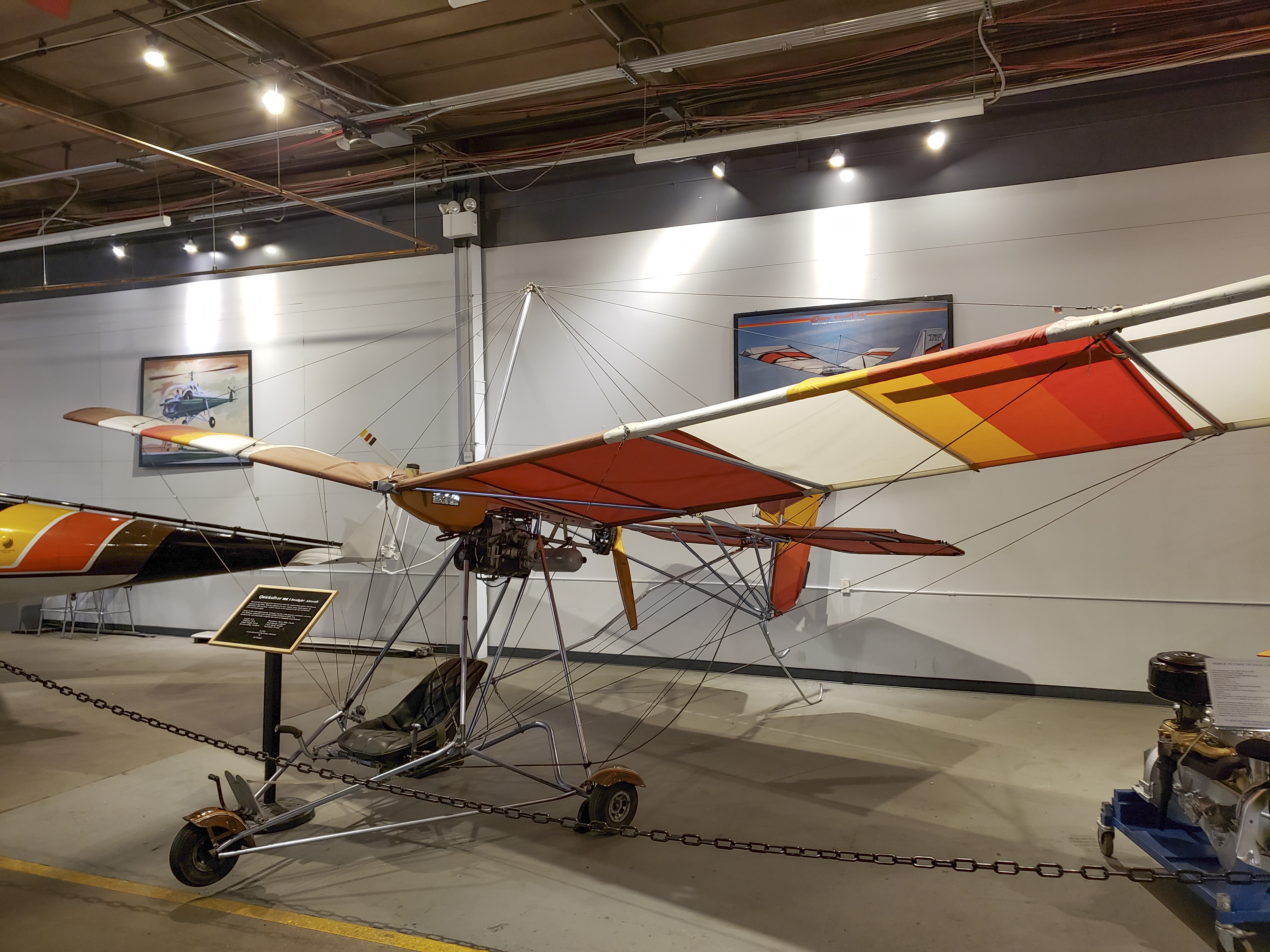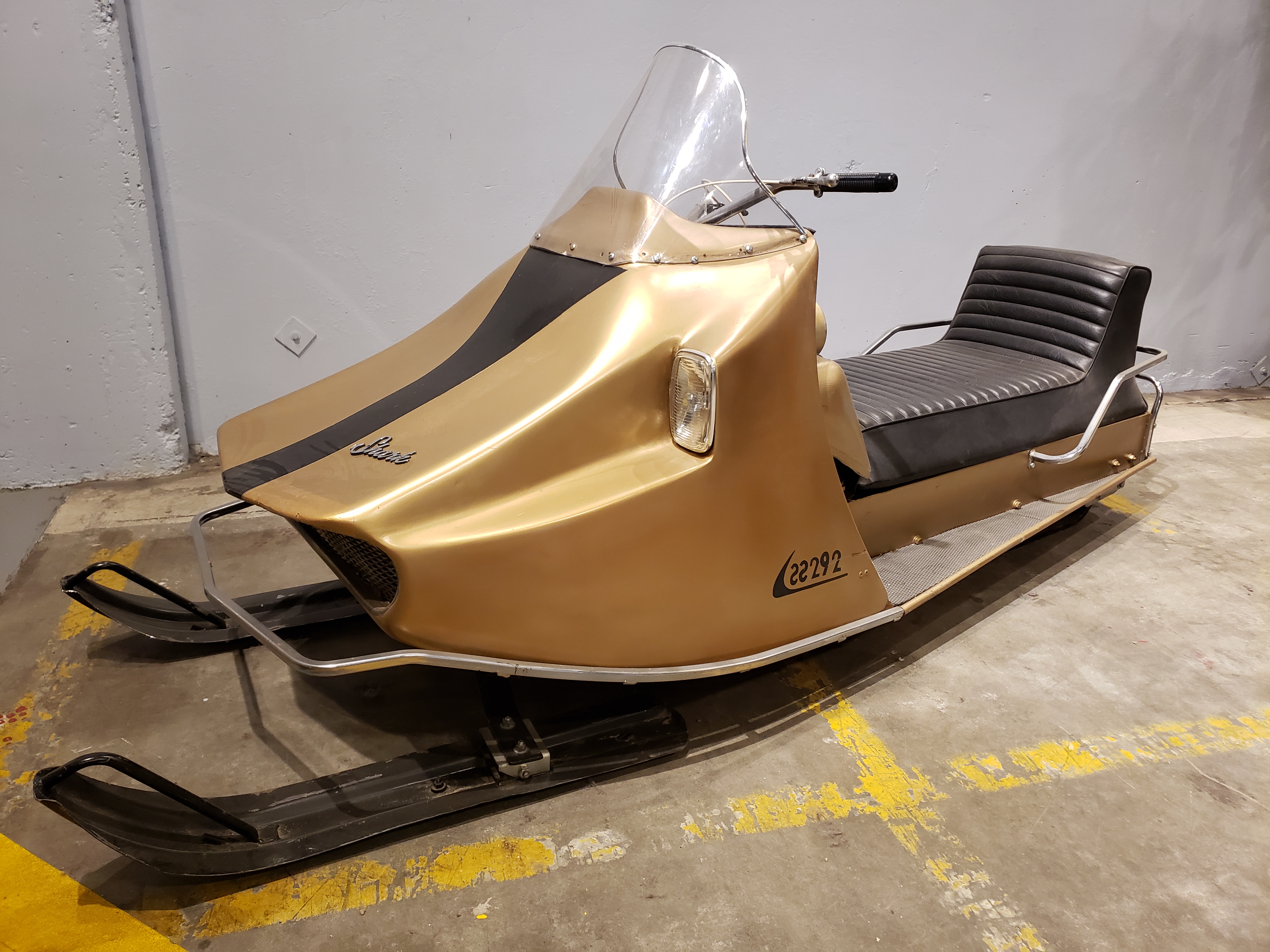At the Forney Museum of Transportation, just off of Interstate 70, the vehicular menagerie runs the gamut from toys to massive steam locomotives. The one-of-a-kind collection isn't just for gearheads; anyone who's traveled will find a compelling mode of transportation here.
It's impossible to pick just one unique vehicle to spotlight, so here are one of each for traveling on land, through the air and over snow.
Land: Staver High Wheeler
More than a century before Tesla sold its first Roadster, Staver was making electric carriages that were more notable for lacking a horse than internal combustion. The museum's 1906 model is one of five known in existence.
The man behind the carriage, Henry Staver, got his start in agricultural implements and diversified into carriages in 1905, manufacturing at a factory in Chicago. The museum's Staver has a two-horsepower motor.
Henry Ford's Model T essentially ended the high-wheeler era when it hit the market in 1909. The new gas-powered car sold nearly 14,000 units in its debut year, while Staver sold just 426 high wheelers.
Nicole Bleau, the museum's collections manager, says gearheads love it, but millennials are at a bit of a loss. "A lot of the younger generation don't realize electric vehicles aren't a new concept," she explains.
But the Staver was just an early chapter in an ongoing story. She points to a number of other electric vehicles in the Forney collection, including a Killacycle. Beyond the museum, the building that is now the Fillmore Auditorium on East Colfax Avenue housed an electric car factory in the early 1900s.
Air: Quicksilver MX motorized hang glider
 First made by Eipper Aircraft in the late 1970s, the Quicksilver MX features controls like a small airplane, but otherwise resembles the mutant offspring of a hang glider and a tricycle.
First made by Eipper Aircraft in the late 1970s, the Quicksilver MX features controls like a small airplane, but otherwise resembles the mutant offspring of a hang glider and a tricycle.
Its empty weight is just 250 pounds, but it could soar 14,000 feet in the air on 28-foot wings and a 40-horsepower engine. But don't venture too far: The fuel tank's capacity is five gallons.
Museum volunteer Al Frank restored the landmark ultralight aircraft on display and donated it to the museum.
"I never flew the thing," says Frank, who says he bought it from a seller in northern Colorado who didn't know much about its history. "You don't have license plates and registration numbers, so it's hard to trace who owned it, when and where it was bought."
"Many people have seen it in the sky, but very few people have gotten within four feet of one," he says. "You're a bird! That's the closest you get."
He says he aimed "to make it as close to the original as possible" with the restoration job. "With a little work, it would be flyable," he adds.
But who's going to test it? "You'd have to be brave," laughs Bleau.
The aircraft was a trailblazer and descendants of the original are still being produced and flown today with many upgrades and improvements. Quicksilver Aircraft has sold more than 15,000 aircraft and has set the industry standard for ultralight vehicles.
Snow: Bruesehoff Shark SS-292 Snowmobile
Made in Colorado and one of just a half-dozen known to exist, the golden Shark snowmobile on display at the museum represents an all-too-brief highlight in the state's vehicular manufacturing history.
 Using a German-made engine, Bruesehoff & Associates manufactured the snowmobile in 1971 in Aurora specifically for the light powder of the Rocky Mountains.
Using a German-made engine, Bruesehoff & Associates manufactured the snowmobile in 1971 in Aurora specifically for the light powder of the Rocky Mountains.
Late founder Floyd Bruesehoff, nicknamed "Breeze," launched Breeze Ski Rentals before going into the snow-machine business in the early 1970s. The 200-pound Shark was designed with the goal of not sinking in the snow like beefier counterparts.
Bruesehoff designed a wide track to prevent it from tipping over. (He named it the Shark because of its wide-mouth look.) The Shark also featured the highest horsepower-to-weight ratio in the industry at the time and a design inspired by a sports car, with tinted windshields and chrome bumpers.
The first sleds were built in Denver, and Bruesehoff was making 20 Sharks a day by 1970, with orders from all over the U.S. and Canada. To meet demand, the company moved to a larger facility in Aurora.
In 2017, Dan Pickenpaugh of Elizabeth, Colo., donated the Shark on display to the museum.



